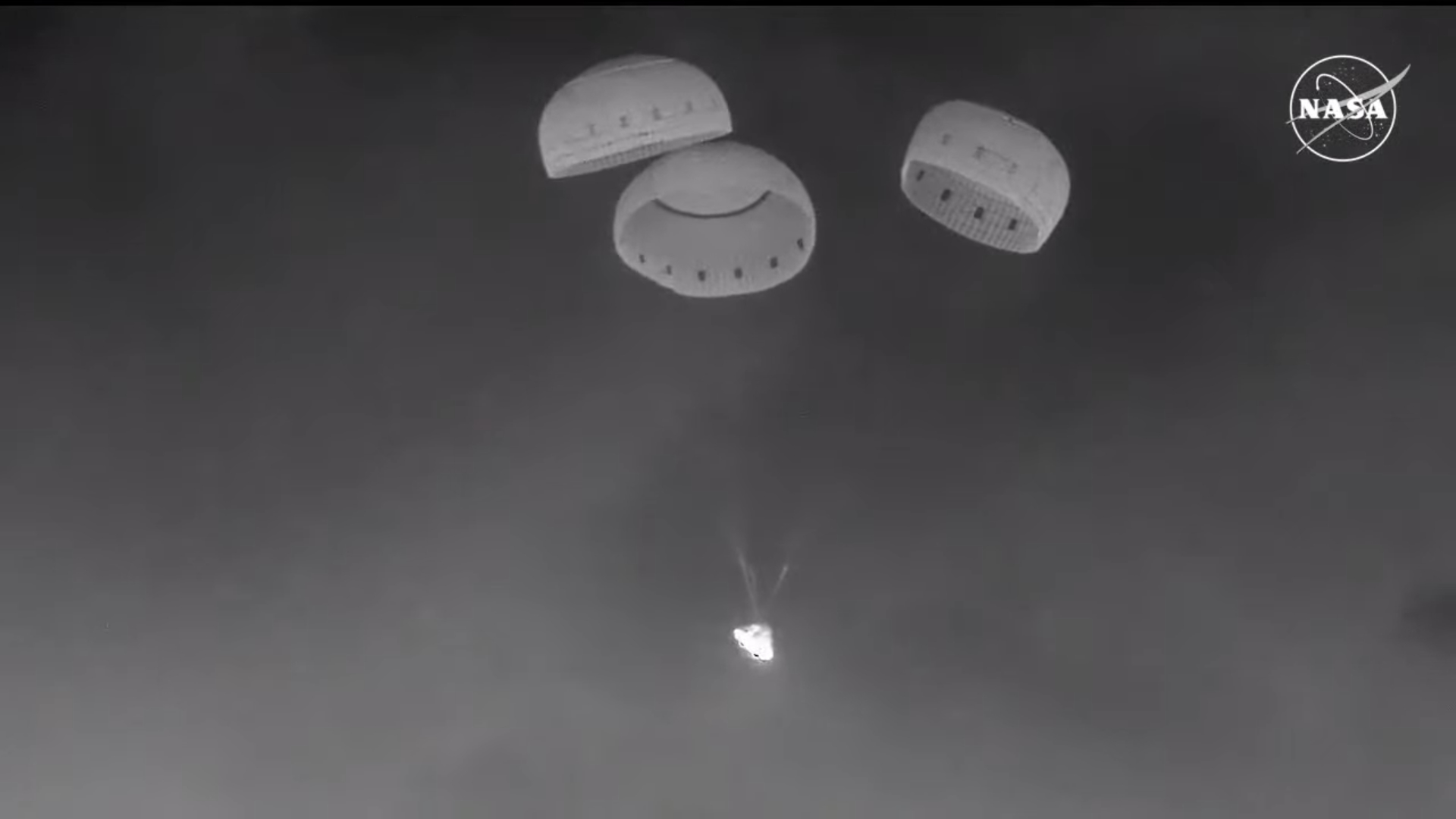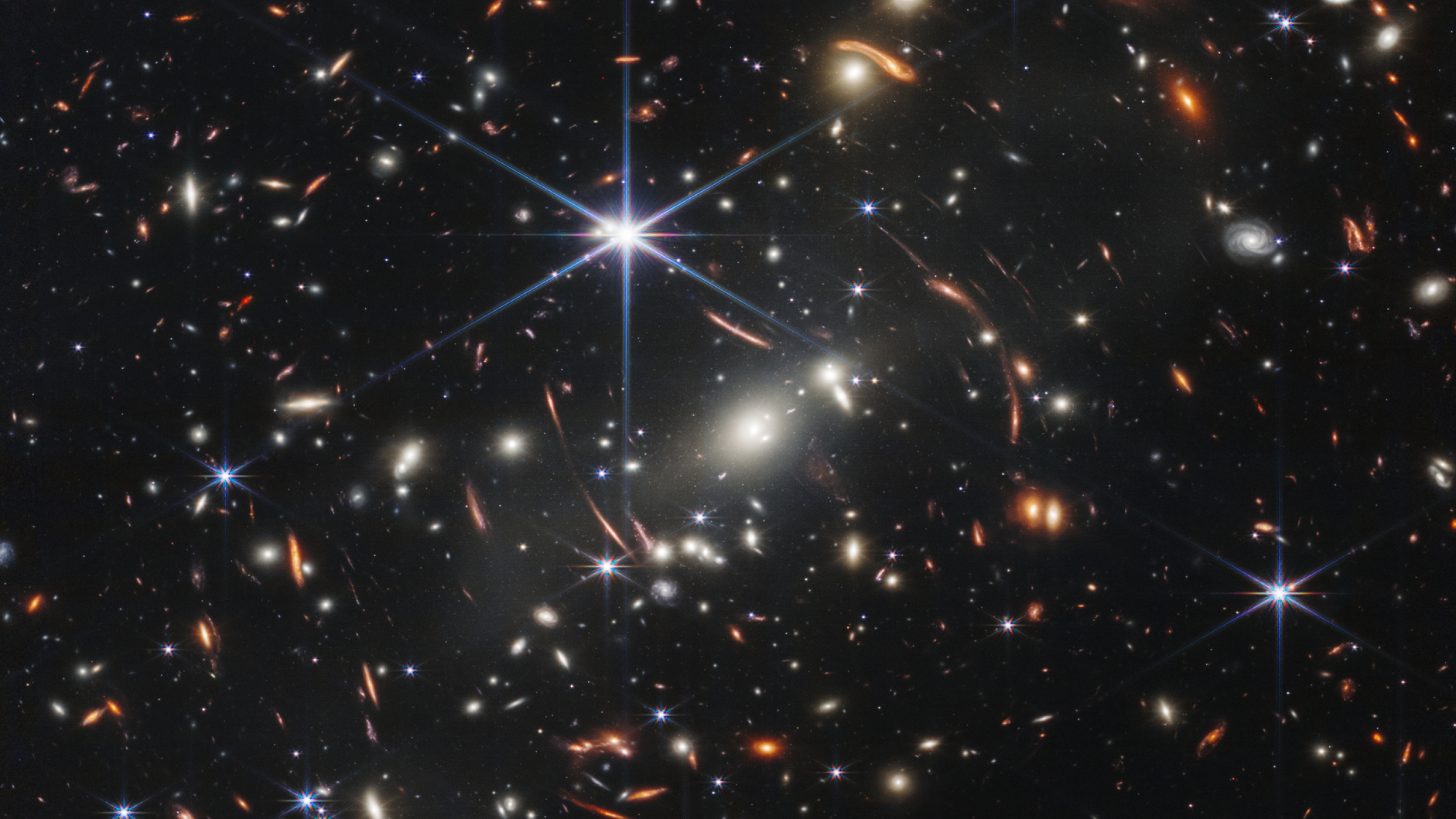NASA still working to 'correct and rectify' Boeing Starliner issues after 1st test flight with astronauts
What happens next is not yet clear.

Nearly two months after Boeing's Starliner returned to Earth without its astronauts, NASA is still working on the issues that complicated the spacecraft's first crewed test flight, agency officials said on Friday (Oct. 25).
Starliner's Crew Flight Test (CFT) concluded on Sept. 6, with the capsule touching down in New Mexico autonomously. NASA astronauts Butch Wilmore and Suni Williams were supposed to be on board, but Starliner's propulsion issues made a crewed return to Earth too risky, the agency has said.
Boeing is supposed to fly half a dozen future astronaut missions to the International Space Station (ISS) before 2030. But NASA officials told reporters on Friday that it could be a while before Starliner's path is established.
"We're just starting that — just trying to understand how to correct and rectify the issues that are on the table," said Richard Jones, deputy program manager of the NASA's Commercial Crew Program at Johnson Space Center (JSC) in Houston. "The schedules associated with how long, and what will be required in that area, [are] in front of us, and we'll be working hard on that to know."
Jones delivered the update about Starliner at the post-splashdown press conference for SpaceX's Crew-8, which was the eighth operational astronaut mission that the California-based company has flown to the ISS for NASA. SpaceX's Crew Dragon, which ferries astronaut crews, is based on the Dragon cargo spacecraft that first flew to space in 2012.
Related: When will Boeing’s Starliner fly astronauts again? NASA still doesn’t know
Boeing didn't have a cargo craft to base Starliner on, so that capsule's development was more involved. Uncrewed missions to the ISS 2019 and 2022 faced various thruster issues that NASA and Boeing thought were resolved before authorizing Wilmore and Williams, former U.S. Navy test pilots, to fly aboard CFT, the first test mission with astronauts.
Get the Space.com Newsletter
Breaking space news, the latest updates on rocket launches, skywatching events and more!
CFT launched on June 5 and docked with the ISS the following day. But five of the 28 thrusters in Starliner's reaction control system misbehaved during the capsule's chasedown of the orbiting lab, delaying the arrival.
Boeing and NASA investigated the thruster issues for several months, pushing Starliner's departure from the ISS back repeatedly. But they were not able to pinpoint the root cause and devise a remedy before sending the capsule back to Earth.
The CFT astronauts were thus reassigned to Crew-9's Crew Dragon for their flight home, which is expected to be in February 2025. That means Wilmore and Williams, both veteran ISS astronauts before this mission, will spend about eight months in space rather than the 10 days, CFT's original expected duration.
NASA, however, temporarily pulled from a four-month reserve of food, water, clothing and other resources on the ISS to keep the duo supplied — and topped that reserve up with goods brought up on robotic resupply ships. Wilmore and Williams pivoted to ISS duties, and, as other astronauts departed, their accelerated drawdown on the space station supplies stopped happening. Perhaps the biggest operational change was to Crew-9 itself, which launched with only two astronauts instead of the expected four to make room for the CFT duo.
CFT was always tagged as a developmental mission, meaning that timelines were uncertain given the spacecraft has not been fully certified for astronauts. The first operational mission, Starliner-1, is supposed to go forward in 2025; that said, the timeline, and the three assigned astronauts, may change as Starliner's future becomes clearer.
Join our Space Forums to keep talking space on the latest missions, night sky and more! And if you have a news tip, correction or comment, let us know at: community@space.com.

Elizabeth Howell (she/her), Ph.D., was a staff writer in the spaceflight channel between 2022 and 2024 specializing in Canadian space news. She was contributing writer for Space.com for 10 years from 2012 to 2024. Elizabeth's reporting includes multiple exclusives with the White House, leading world coverage about a lost-and-found space tomato on the International Space Station, witnessing five human spaceflight launches on two continents, flying parabolic, working inside a spacesuit, and participating in a simulated Mars mission. Her latest book, "Why Am I Taller?" (ECW Press, 2022) is co-written with astronaut Dave Williams.
NASA astronaut Don Pettit and 2 cosmonauts will return to Earth on April 19
See gorgeous green auroras dance over Earth in dazzling ISS astronaut video
-
Mars Tafts When they finish whatever ground testing or re-design NASA feels is needed launch another mission with supplies. If the spacecraft makes it to the ISS without any issues bring the two astronauts home on that craft as it it show it can re-entry without a problem. If all that happens then NASA can pay for that mission. If there are still problems does not then Boeing can pay for it.Reply -
billslugg Reply
Boeing was obligated to demonstrate success under a fixed price contract. Once demonstrated then NASA would pay for subsequent flights. The most likely scenario IMHO is ULA will fold.Mars Tafts said:When they finish whatever ground testing or re-design NASA feels is needed launch another mission with supplies. If the spacecraft makes it to the ISS without any issues bring the two astronauts home on that craft as it it show it can re-entry without a problem. If all that happens then NASA can pay for that mission. If there are still problems does not then Boeing can pay for it. -
24launch This statement is incorrect:Reply
The first operational mission, Starliner-1, is supposed to go forward in 2025; that said, the timeline, and the three assigned astronauts, may change as Starliner's future becomes clearer.
NASA had already said that while Starliner might fly in 2025 on some unspecified mission (test? manned/unmanned? cargo only?), the first operational crew mission will be NET (no earlier than) 2026. Both the NET Feb 2025 and NET July 2025 crew rotation missions are already scheduled with SpaceX.
This new excuse initially coming from Boeing and now parroted by NASA just kills me:
SpaceX's Crew Dragon, which ferries astronaut crews, is based on the Dragon cargo spacecraft that first flew to space in 2012. Boeing didn't have a cargo craft to base Starliner on, so that capsule's development was more involved.
Back when commercial crew was first being proposed and funded both frmr NASA Admin Charles Bolden and then Senator Bill Nelson lobbied HARD against it and said all the money should be given to Boeing because they are the known, proven company who were there during Apollo, built the shuttles, etc. They didn't have any interest in some fledgling company run by a foreign, eccentric billionaire. Thankfully the likes of Lori Garver fought hard for CCP or we'd still be relying on Russia to ferry astronauts.
Just a comment to Bill's comment, Starliner is Boeing, not ULA. They launch on the now discontinued ULA Atlas V rockets of which I believe there are only 6 remaining for the 6 contracted crew missions (the rest have been bought by Amazon for Kuiper launches), so if NASA requires any more test launches then Boeing can't fulfill their contract of 6 operational missions and get their full payout - though with their now $2Bil loss on Starliner, even completing the contract they will still be at a loss.
Will be interesting to see what happens. Though the CEO of Boeing said they're committed to Starliner, it's the Shareholders and Board who will ultimately decide its fate. Keep in mind too, Boeing is the Prime contractor on NASA's SLS rocket, which is still seeing continued massive cost overruns and awards given out despite missed milestones (the argument being it keeps the Boeing engineers incentivized to go their very best!) so while Boeing is losing money on Starliner, their Space division is still pulling in bucket loads of taxpayer funds on that lovely cost plus contract and will all through the end of the decade while Artemis remains funded. -
Helio There are numerous reports that Boeing is considering a sell-off of this program. Their stock, per Bloomberg, states are up because of this possibility.Reply -
fj.torres ReplyHelio said:There are numerous reports that Boeing is considering a sell-off of this program.
Seen some.
But not the ARTEMIS contracts.
Nobody willingly gives up a juicy cost+ contract. -
24launch I myself just saw the headlines about Boeing looking for a buyer for it's fixed-cost contracts including Starliner but yep, excluding the SLS cash cow:Reply
(Reuters) -Boeing is exploring the sale of some parts of its space business, the Wall Street Journal reported on Friday, citing people familiar with the matter.
The NASA business that Boeing is exploring a sale of includes the troubled Starliner space vehicle and operations that support the International Space Station, but excludes the unit building NASA's Space Launch System, the newspaper reported.
The article is on Yahoo news if you don't want to deal with the WSJ paywall.
The question remains, who would buy it? MAYBE Bezos purely for the technology knowhow. But Blue already gave a pass to the purchase of ULA - rumored ULA is asking waaaay too much - so seems unlikely. -
edd Lack of launchers for another CFT plus all the contracted missions, Boeing's massive losses, the U.S. election and potential for increasing politicization of the landscape, all pull future decisions away from the hands of engineers and scientists and toward the hands of politicians and bean counters. Astronauts beware.Reply









